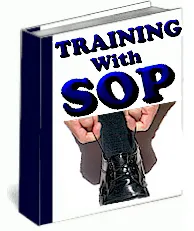In the realm of operational excellence and continuous improvement, standard work stands as a cornerstone. It ensures consistency, quality, and efficiency in any organization. But what exactly constitutes standard work? It is a harmonious blend of processes, procedures, and work instructions. Understanding these elements and how they interrelate is crucial for any business striving for excellence. Let’s delve into each component and explore how they collectively form the foundation of standard work.

Processes: The Blueprint of Operations
A process is a high-level view of a sequence of actions or steps taken to achieve a particular end. It is the overarching framework that defines the flow of work from start to finish. Think of processes as the map that outlines the journey from point A to point B.
Key Characteristics of Processes:
- Broad Overview: Processes provide a bird’s-eye view of the workflow.
- Sequence of Steps: They outline the order in which activities should occur.
- Goals and Objectives: Processes are designed to achieve specific outcomes or goals.
Example:
In a manufacturing setting, a process might detail the flow from raw material procurement to the finished product delivery. This could include steps such as sourcing materials, production, quality control, and distribution.
Procedures: The Detailed Guide
While processes provide a high-level overview, procedures dive into the specifics. A procedure is a detailed guide that explains how to perform each step within a process. It breaks down the process into smaller, manageable tasks and provides clear instructions on how to execute them.
Key Characteristics of Procedures:
- Detailed Instructions: Procedures offer a step-by-step guide for specific tasks.
- Standardization: They ensure consistency and uniformity in task execution.
- Clarity: Procedures are written in clear, concise language to avoid ambiguity.
Example:
Continuing with the manufacturing example, a procedure might describe how to operate a specific machine. It would include safety precautions, operating steps, troubleshooting tips, and maintenance schedules.
Work Instructions: The Specific Actions
Work instructions are the most granular level of detail. They provide specific directions on how to perform individual tasks within a procedure. Work instructions are often highly detailed and may include diagrams, checklists, and other aids to ensure accuracy.
Key Characteristics of Work Instructions:
- Task-Specific: Work instructions focus on single tasks or activities.
- Highly Detailed: They provide explicit, step-by-step directions.
- Visual Aids: Instructions often include images, diagrams, or checklists to enhance understanding.
Example:
For a machine operation procedure, work instructions might specify how to calibrate the machine, including the exact settings, tools needed, and safety checks.
The Synergy: Creating Standard Work
When processes, procedures, and work instructions are effectively integrated, they create a robust framework known as standard work. This framework ensures that tasks are performed consistently, efficiently, and safely, regardless of who is performing them.
Benefits of Standard Work:
- Consistency: Standard work eliminates variability, ensuring that tasks are performed the same way every time.
- Quality: It helps maintain high standards of quality by providing clear guidelines and checks.
- Efficiency: Standard work streamlines operations, reducing waste and improving productivity.
- Training: It serves as a valuable training tool, helping new employees learn tasks quickly and accurately.
- Continuous Improvement: Standard work provides a baseline for measuring performance and identifying areas for improvement.
Implementing Standard Work
To implement standard work effectively, follow these steps:
- Document Processes: Start by mapping out the high-level processes in your organization.
- Detail Procedures: Break down each process into detailed procedures, outlining the steps required to complete each part of the process.
- Develop Work Instructions: Create specific work instructions for individual tasks, ensuring they are clear and comprehensive.
- Train Employees: Use the documented processes, procedures, and work instructions to train employees, ensuring they understand and follow the standard work.
- Monitor and Improve: Continuously monitor performance and gather feedback to refine and improve standard work over time.
Conclusion
Standard work is more than just a set of documents; it is a dynamic framework that evolves with your organization. By understanding and implementing the interplay between processes, procedures, and work instructions, you can achieve operational excellence, drive continuous improvement, and foster a culture of consistency and quality. Embrace standard work, and you’ll pave the way for a more efficient, effective, and high-performing organization.




